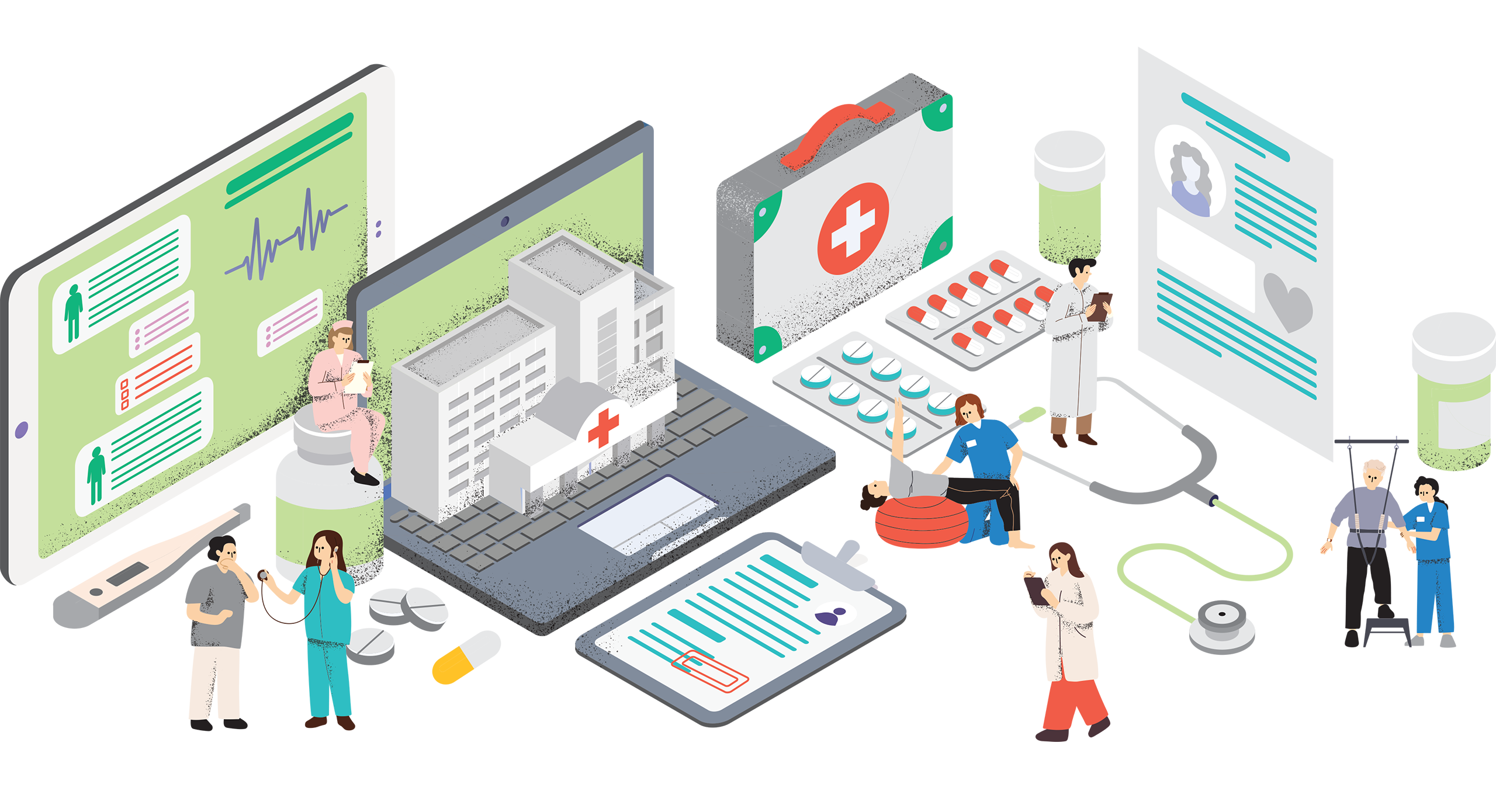Electronic Health Record Sharing System (eHealth)
eHealth App
“HA Go”
Health Surveys
Table 6.1
Population Health Survey
Household Interview and self-administered questionnaire
- Physical and psychosocial health status
- Health-related lifestyle practices
- Preventive health practices
- Household information
Health Examination
- Physical measurements
- Blood pressure
- Body Height and Weight
- Waist and hip circumference
- Biochemical tests
- Lipid profile
- HbA1C and fasting plasma glucose
- Iron status
- Viral hepatitis
- Urine test for iodine, sodium, potassium and creatinine
Health Technology and COVID-19
Table 6.2
eHealth measures under COVID-19
Online platform for private doctors to order COVID-19 oral drugs
- Private doctors who have registered under the eHealth are provided with a dedicated electronic platform to enable them to make requests for the two antiviral drugs, Paxlovid and Molnupiravir, for COVID-19 patients
- Private doctors may log in at the platform to make the requests, and the order will be distributed to their selected practice address among those they have registered with the eHealth. The distributor will process the requests as far as possible on the following working day. A maximum of 10 standard courses of treatments for each antiviral is allowed on each order request
- Guidelines, fact sheets on the use of the drugs as well as other points to note provided by HA are available for download at the ordering pages of the platform
Telemedicine pilot programme under “HA Go”
- COVID-19 patients in the community may make appointments for designated clinic/ tele-consultation service through "HA Go"
- Add-on functions are introduced to support specified groups of patients to receive tele-consultation services
- Patients may choose to receive their service either in-person or through the tele-consultation functions of HA Go
COVID-19 vaccination record under eHealth App
- The public can store and display their COVID-19 vaccination records and medical exemption certificate and the related QR codes for facilitating the Vaccine Pass arrangement.
“Fight the Virus Together – Chinese Medicine Telemedicine Scheme"
- HHB, through the Chinese Medicine Development Fund and co-ordinated by the Federation of the Hong Kong Chinese Medicine Practitioners and Chinese Medicines Traders Association, launched a special support scheme to subsidise Chinese medicine practitioners to provide free Chinese Medicine (CM) telemedicine services as well as dispensing and delivery of CM drug to relevant patients.
The Challenges
Our Aim
Recommendation 6.1
Enhance the eHealth as the gate-keeping and referral tool for care co-ordination and health surveillance
Table 6.3
eHealth enhancement measures
Migration of eHealth System (Subsidies) to the eHealth
- Developed in 2008, the eHealth System (Subsidies) (eHS(S)) serves as the administrative and record keeping system for the Elderly Health Care Vouchers (EHCV) Scheme and Vaccination Subsidy Scheme (VSS). For the EHCV, it provides the platform for healthcare service providers to manage the eHealth accounts for the elderly and handle reimbursements. As for the VSS, it stores the reimbursement records of vaccinations administered under different programmes and the vaccination records of the territory-wide COVID-19 Vaccination Programme
- Following system migration, data from eHS(S), including reimbursement records/ vaccination records and voucher usage, etc., would become part and parcel of the eHealth central data repository and may be used and shared via the existing eHealth channels connecting the different sectors and tiers of the healthcare system, subject to the parameters for data sharing under the prevailing governance of the eHealth
Integration of Primary Care Directory (PCD)
- As discussed at Recommendation 3.2, the PCD is a web-based electronic database containing practice information and professional qualifications of primary care providers in the community. In support of the long term development of primary healthcare at the community level, the policy direction is now to redefine the role of the PCD into a Primary Care Register (PCR) which could serve as a central register for all primary healthcare professionals under one umbrella for better monitoring, co-ordination and quality assurance
- It is proposed that the PCR be linked up and integrated with the eHealth public interface in order to provide a one-stop platform for users to access information on the PCR
Integration of all public-private partnership (PPP) programmes & SPPs under the eHealth platform
- The migration and integration of various systems to the eHealth platform, together with the eHealth’s existing linkages with PPP programmes and future SPPs, will help provide a common platform for programme enrollment, user account management, service monitoring, financial reimbursement and auditing, etc.


